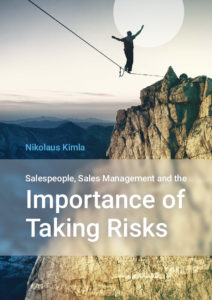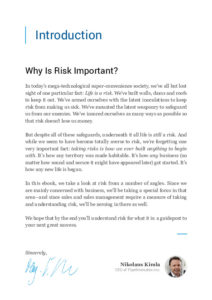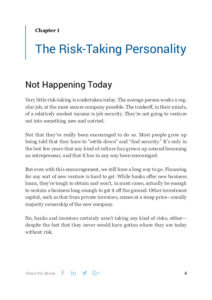In today’s mega-technological super-convenience society, we’ve all but lost sight of one particular fact: Life is a risk. We’ve built walls, dams and roofs to keep it out. We’ve armed ourselves with the latest inoculations to keep risk from making us sick. We’ve mounted the latest weaponry to safeguard us from our enemies. We’ve insured ourselves as many ways as possible so that risk doesn’t lose us money.
But risk is part of life, part of business–let’s fact it, part of everything. Taking risk is how anything ever got built, invented, created or originated in the first place. It’s how anyplace was ever discovered, then made habitable and colonized. And taking a closer look at the environment in which we all live, taking risk is how any business ever got founded, built up and became any kind of success; somebody somewhere stepped out and took that risk.
Start Taking Risks Again
In this ebook, Nikolaus Kimla shows us how and why taking risk is actually important. Since, with Pipeliner, we are mainly concerned with business, the book mainly focuses there. And since sales and sales management require a measure of taking and understanding risk, we’ll be zeroing in there as well.
Nikolaus takes us through an understanding of the risk-taking personality–what kind of person is it that takes risks? In detail we examine why salespeople should once again become risk takers. We learn why sales managers need to have a full understanding of leading and lagging indicators in order to accurately predict risk. We learn the crucial role that technology must play in predicting and understanding risk. We take a real-life risk lesson taken from today’s headlines. And much more.
We hope that by the end you’ll understand risk for what it is: a guidepost to your next great success!
Because of technology’s capability for reduction of risk, we see high-tech virtually everywhere: hospitals, cars, schools—and even in our homes. Today’s Internet of Things is comprised of a vast array of smart devices and appliances, interconnected with each other, and with us. It has now come to pass that technology not only reduces risk, but warns us when risk threatens.
Chapter 1: The Risk-Taking Personality
What kind of personality is it that can (often successfully) take risks? That would, of course, be the entrepreneur. It’s the one type of individual that can lead and get anything built. For any great innovation or forward measure in a society, you’ll find some kind of entrepreneur behind it.
Chapter 2: Salespeople: Become Risk-Takers Once Again
In the last 20 years or so, automation has taken an enormous role in sales. A mammoth attempt has been made to create a “perfect system” in which leads are sought out, discovered, and served up to salespeople so that all they have to do is sell.
The net result of these efforts, if continued, could ultimately lead to a sales force that no longer takes risks. But the thing is, taking risks is a large part of what made them salespeople to begin with.
Chapter 3: Sales Management: Importance of Leading and Lagging Indicators
Much of the time, sales management is conducted through what are called lagging indicators. But in managing for the future, we need something that will show us how the activities we are engaging in now will impact our figures for the quarter or the year.
Chapter 4: Evening Out Company Risk (Lessons From VW)
In normal conditions, especially in companies with greater longevity, owners and executives have an understanding that there is a balance between risk and sustainability. It occasionally happens, though, that company management and even owners lose sight of the fact that risk and sustainability are related, and go completely overboard with risk. A fantastic case in point comes right out of today’s headlines—that of German auto maker Volkswagen.
Chapter 5: Increased Sales Are Literally Staring You in the Face
A sales manager faces many daily frustrations in sorting through and figuring out all the risks that must be estimated, taken and not taken. A large part of the reason for this frustration is that a sales team is made up all kinds of divergent elements. How does the sales manager bring them all under control?
Chapter 6: The Real Edge on Reducing Risk: Technology
Any forward technological advance in a civilized society is usually conducted in an effort to reduce risk. If you don’t fully embrace that concept, then you can never use risk factors to lead you to sound decisions—they can only surprise you, and often in a bad way.


































Comments